A café bar in the late 1990s, this building had been The Waggon and Horses since 1818. Its original name was restored by Wetherspoon in 2003.
A print and text about the Waggon and Horses.
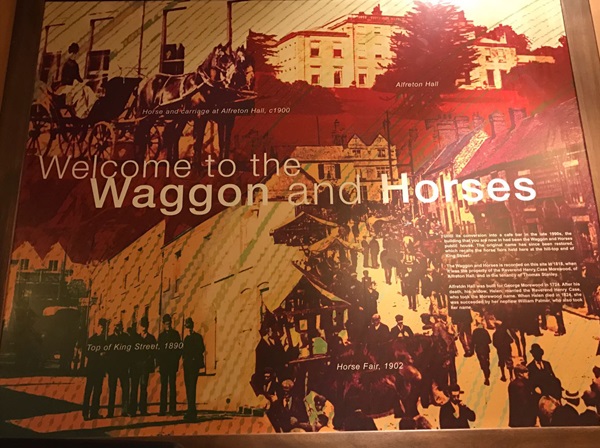
The text reads: Until its conversion into a café bar in the late 1990s, the building that you are now in had been the Waggon and Horses public house. The original name has since been restored, which recalls the horses fair held here at the hill top end of King Street.
The Waggon and Horses is recorded on this site in 1818, when it was the property of the Reverend Henry Case Morewood, of Alfreton Hall, and in the tenancy of Thomas Stanley.
Alfreton Hall was built for George Morewood in 1724. After his death, his widow, Helen, married the Reverence Henry Case, who took the Morewood name. When Helen died in 1824, she was succeeded by her nephew William Palmer, who also took her name.
An illustration and text about the early days of Alfreton.
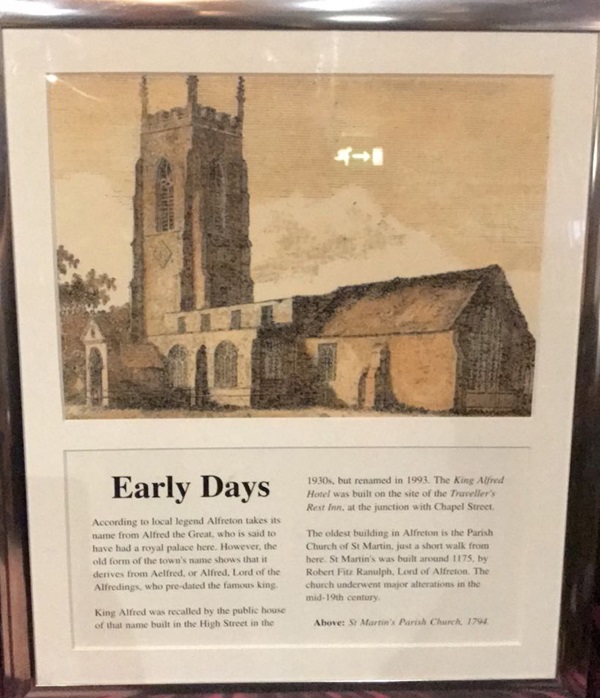
The text reads: According to local legend Alfreton takes its name from Alfred the Great, who is said to have had a royal palace here. However, the old form of the town’s name shows that it derives from Aelfred, or Alfred, Lord of the Alfredings, who pre-dated the famous king.
King Alfred was recalled by the public house of that name built in the High Street in the 1930a, but renamed in 1993. The King Alfred Hotel was built on the site of the Traveller’s Rest Inn, at the junction with Chapel Street.
The oldest building in Alfreton is the parish church of St Martin, just a short walk from here. St Martin’s was built around 1175, by Robert Fitz Ranulph, Lord of Alfreton. The church underwent major alterations in the mid 19th century.
Above: St Martin’s Church, 1794.
A photograph and text about Robert Watchorn.
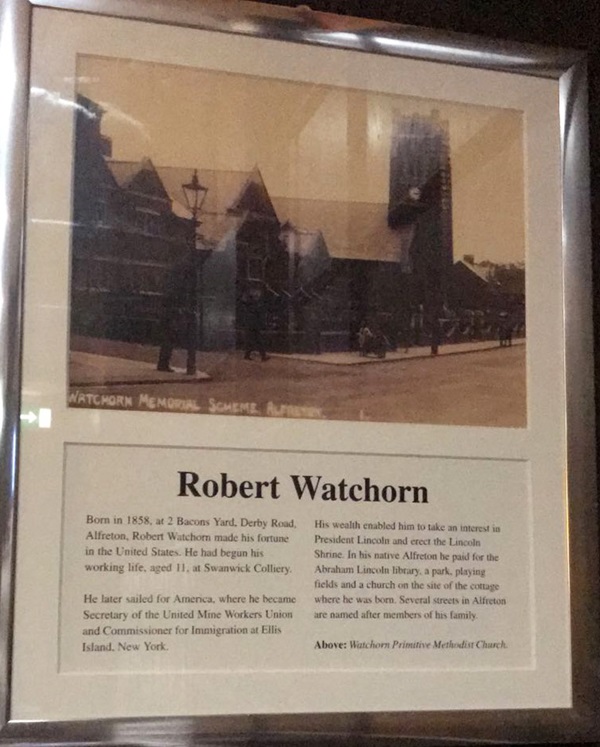
The text reads: Born in 1858, at 2 Bacons Yard, Derby Road, Alfreton, Robert Watchorn made his fortune in the United States. He had begun his working life, aged 11, at Swanwick Colliery.
He later sailed for America, where he became secretary of the United Mine Workers Union and commissioner for immigration at Ellis Island, New York.
His wealth enabled him to take an interest in president Lincoln and erect the Lincoln Shrine. In his native Alfreton he paid for the Abraham Lincoln Library, a park, playing fields and a church on the site of the cottage where he was born. Several streets in Alfreton are named after members of his family.
Above: Watchorn Primitive Methodist Church.
Photographs and text about Wingfield Manor.
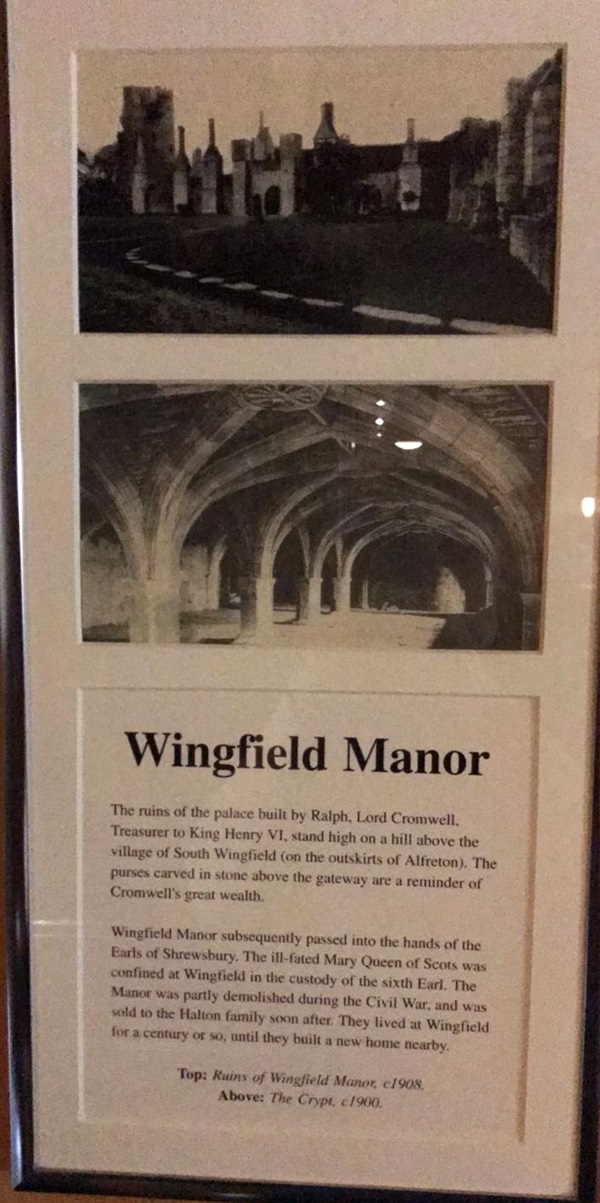
The text reads: The ruins of the palace built by Ralph, Lord Cromwell, treasurer to King Henry VI, stand high on the hill above the village of South Wingfield (on the outskirts of Alfreton). The purses carved in stone above the gateway are a reminder of Cromwell’s great wealth.
Wingfield Manor subsequently passed into the hands of the earls of Shrewsbury. The ill-fated Mary Queen of Scots was confined at Wingfield in the custody of the sixth earl. The manor was partly demolished during the Civil War, and was sold to the Halton family soon after. They lived at Wingfield for a century or so, until they built a new home nearby.
Tops: Ruins if Wingfield Manor, c1908
Above: The Crypt, c1900.
Photographs and text about market days.
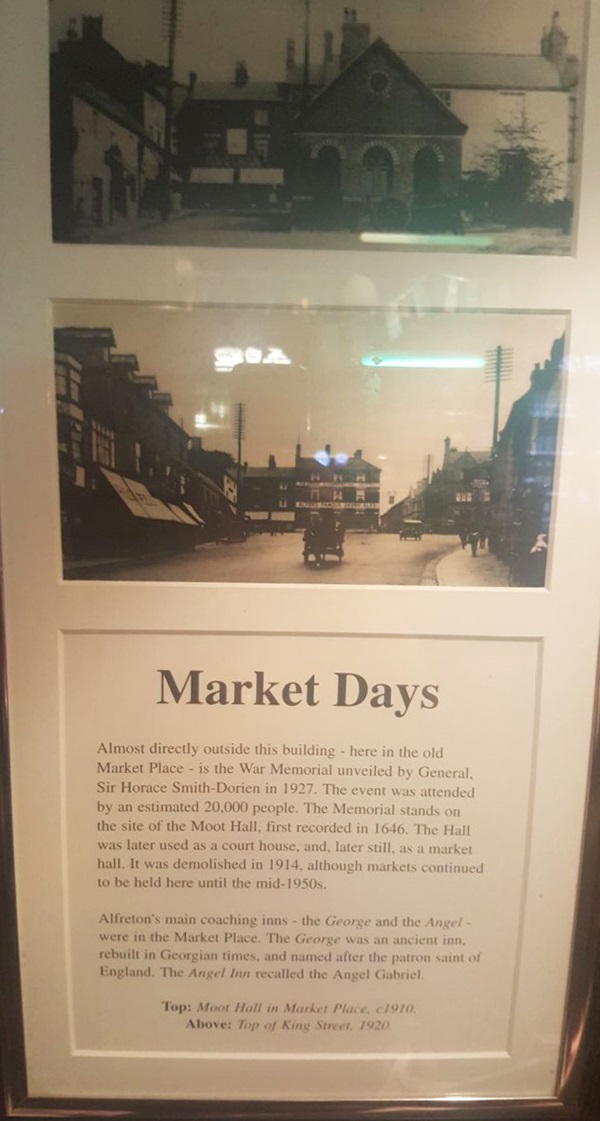
The text reads: Almost directly outside this building – here in the old Market Place – is the War Memorial unveiled by General, Sir Horace Smith-Dorien in 1927. The event was attended by an estimated 20,000 people. The memorial stands on the site of the Moot Hall, first recorded in 1646. The hall was later used as a court house, and, later still, as a market hall. It was demolished in 1914, although markets continued to be held here until the mid 1950s.
Alfreton’s main coaching inns, the George and the Angel Inn – were in the Market Place. The George was an ancient inn, rebuilt in Georgian times, and named after the patron saint of England. The Angel Inn recalled the Angel Gabriel.
Top: Moot Hall in Market Place, c1910
Above: Top of King Street, c1920.
An illustration of Mary Queen of Scots, who was held prisoner at Wingfield Manor.
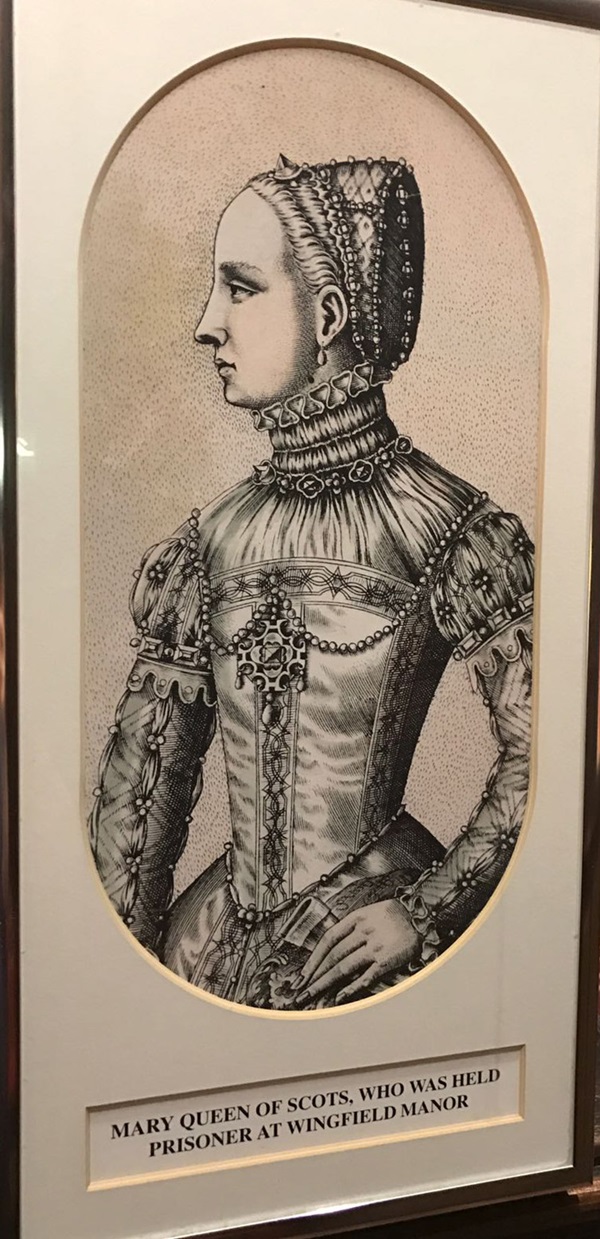
Old photographs of Alfreton.
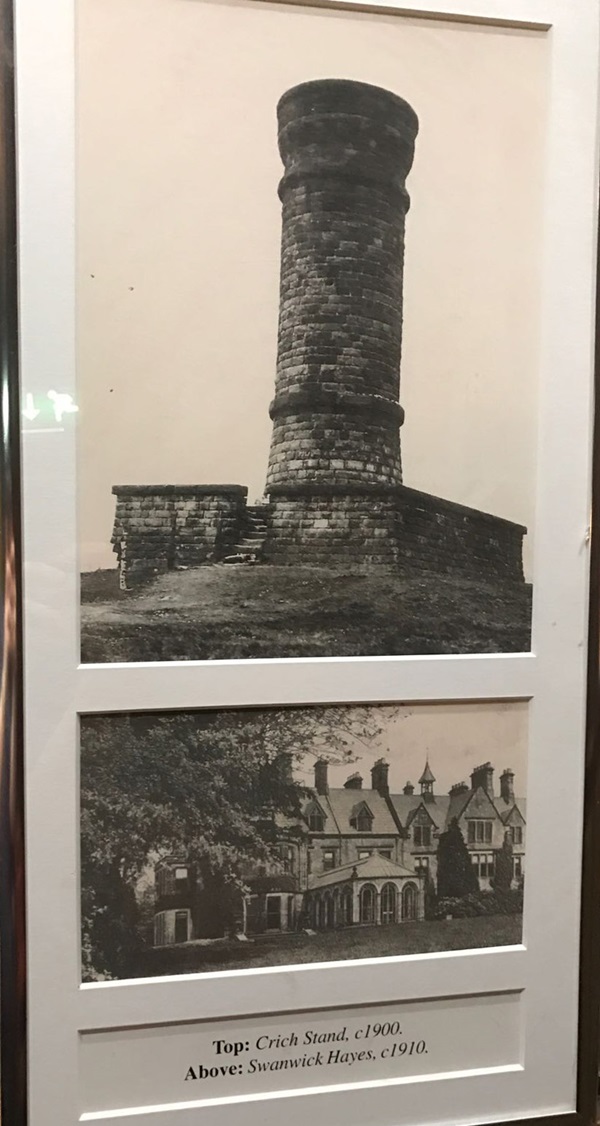
Top: Crich Stand, c1900
Above: Swanwick Hayes, c1910.
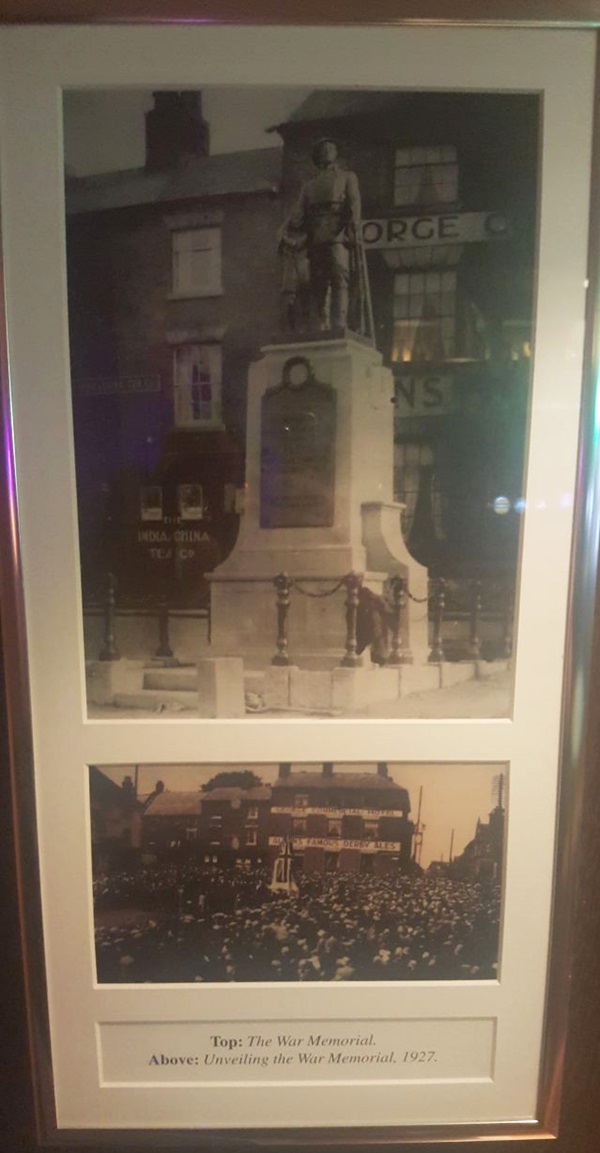
Top: The War Memorial
Above: Unveiling of the War Memorial, 1927.
External photograph of the building – main entrance.
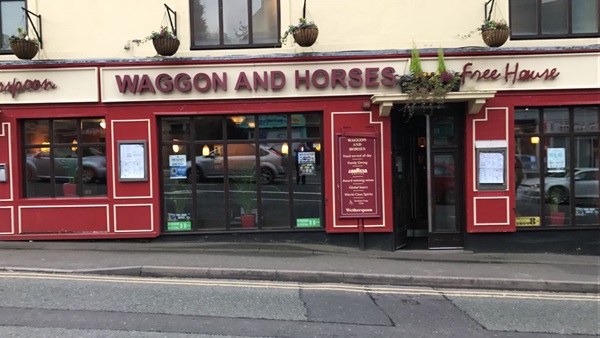
If you have information on the history of this pub, then we’d like you to share it with us. Please e-mail all information to: pubhistories@jdwetherspoon.co.uk